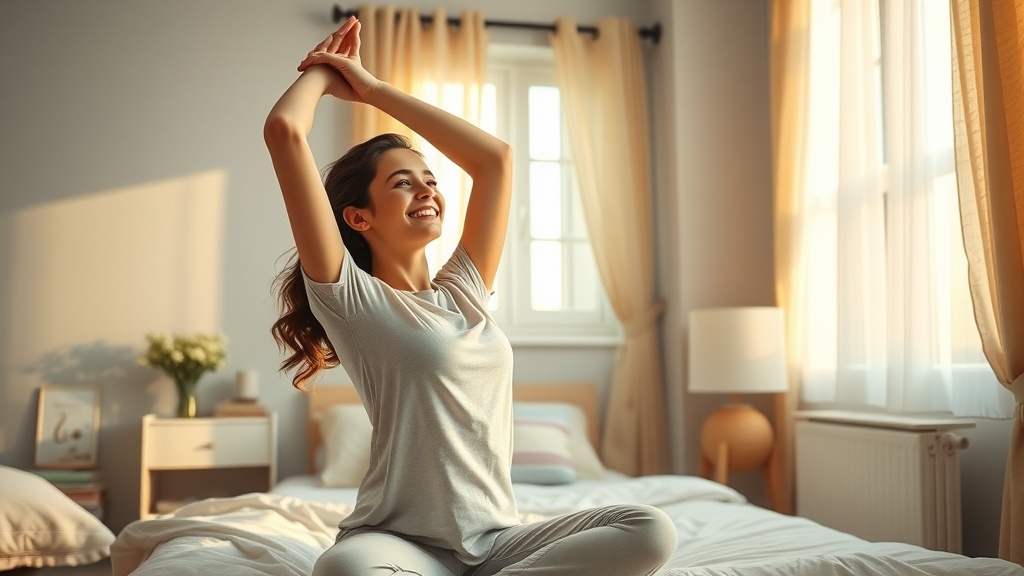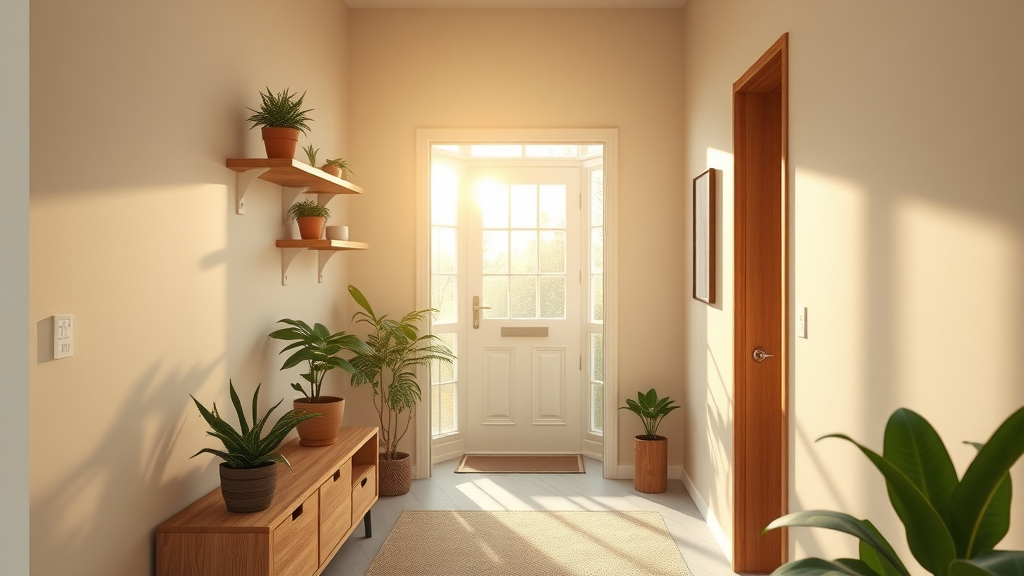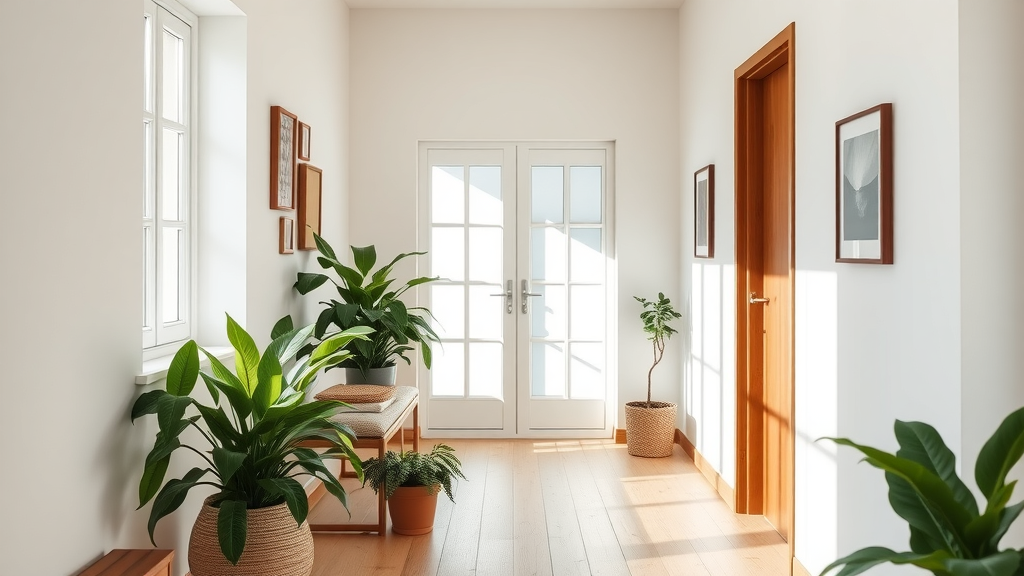Did you know that a decluttered home can reduce stress levels by up to 60%? Embrace the journey towards a happier, healthier you! Achieving long-lasting wellness and joy may start with something as simple as organizing your space. While most women associate tidying up with chores or aesthetics, the true benefits of decluttering go far deeper. In this comprehensive guide, we’ll explore how decluttering empowers women to reclaim not only their homes, but also their health, balance, and happiness. If you’ve ever wondered why decluttering feels so good, or how a cleaner living space could impact your day-to-day well-being, you’re about to uncover surprising answers—with actionable steps you can start today.
"Did you know that a decluttered home can reduce stress levels by up to 60%? Embrace the journey towards a happier, healthier you!"

Discovering the Surprising Benefits of Decluttering: A Brighter Path to Joyful Living
For women navigating busy lives, the home environment plays a significant role in shaping mental, emotional, and physical well-being. The benefits of decluttering reach far beyond the simple satisfaction of seeing organized shelves or a clear countertop. Research consistently reports that living in an orderly environment can have a remarkable impact on mental health, reducing anxiety, depression, and even the symptoms of hoarding disorder. Studies highlighted by leading outlets like Psychology Today note that a cluttered home is often linked to higher levels of stress and can make it difficult to find peace or focus.
Many women find themselves emotionally weighed down by clutter—unneeded items, outdated belongings, or that infamous junk drawer filled with random objects that no longer serve a purpose. These items can hold you back not only in your daily routines, but by diminishing your capacity to process information, limiting creativity, or even worsening health conditions like asthma and allergies. The act of organizing your living space provides more than practical solutions; it creates space for new habits, self-discovery, and joy. By working to regain control clutter brings into our lives, we allow ourselves to thrive, foster motivation, and cultivate fulfilling routines. It’s not just about the external tidy—decluttering is a powerful self-care tool for women seeking health and happiness.

What You’ll Learn: The True Benefits of Decluttering for Women
- The strong connection between decluttering and women’s mental health benefits
- How the benefits of decluttering extend to emotional and physical wellness
- Practical strategies to harness decluttering as a catalyst for personal growth
- Tools and frameworks for developing consistent decluttering habits
Understanding the Core Health Benefits of Decluttering
| Health Aspect | Key Benefits of Decluttering | Real-Life Impact on Women |
|---|---|---|
| Mental Health | Reduces anxiety, depression, and cognitive overload; boosts confidence and motivation | Greater focus, peace, and positivity in daily life |
| Physical Wellness | Reduces allergens, decreases asthma and allergies, improves sleep | Fewer health issues and a safer, more restful home for women and families |
| Emotional Well-being | Provides a sense of control, fosters joy, and enhances relationship quality | Women feel empowered, balanced, and connected to loved ones |
How Decluttering Enhances Mental Health: Breaking the Stress Cycle

- Lower anxiety and depression rates (mental health and mental health benefits)
- Improved emotional stability and confidence
- Boosted mood and increased motivation
The connection between decluttering and mental health is profound, especially for women managing multiple roles and responsibilities. Research shows that a cluttered home can bombard the mind, leading to chronic stress and even decision fatigue. When our surroundings are filled with unnecessary items, the brain’s capacity to process information and working memory become overloaded. This constant distraction can spark feelings of overwhelm and frustration.
Conversely, organized spaces offer a chance to break this exhausting stress cycle. As you rid of clutter and unneeded items, you carve out a physical environment that supports mental clarity and emotional resilience. The process is empowering: each time you organize and manage a space, you not only reclaim physical room but regain a sense of control in your life. For older adults or women experiencing challenging transitions, the benefits extend even deeper—creating stability in uncertain times. Ultimately, the positive impact on mental health benefits is among the most valuable rewards of decluttering, paving the way for healthy routines and joyful living.
Physical Wellness: The Overlooked Benefits of Decluttering Your Space
- Reduced allergens and improved air quality
- Enhanced sleep quality and overall calm
- Safer, more efficient living environments for women
Physical health is often ignored when discussing the benefits of decluttering, but the changes can be striking. Excess belongings collect dust and dander, increasing the risk of asthma and allergies—common issues among women and children alike. Streamlining your living space by removing unnecessary or unneeded items can also make it easier to clean regularly, improving air quality and overall hygiene. As a bonus, you’re less likely to trip, slip, or lose your balance in a home free from obstacles.
Quality sleep and relaxation are closely tied to an environment that feels safe and calming. Clutter keeps your mind alert and can even contribute to heightened heart rates and insomnia. By keeping your bedroom and shared living spaces tidy and organized, you create a personal sanctuary ideal for rest and rejuvenation. The physical health benefits of decluttering ripple out to impact energy levels, motivation, and general well-being—ensuring women are primed not only for self-care but for the responsibilities and joys of daily life.
The Positive Ripple Effect: Decluttering and Women’s Daily Joy
- Unlocking creativity and clarity
- More time for meaningful relationships
- Creating routines that foster joy and fulfillment
The journey to remove excessive clutter is about more than creating a visually pleasing home; it fosters important shifts in mindset and lifestyle. As women, our time and attention are precious commodities. When you spend less time searching for lost items or feeling distracted by a cluttered environment, you gain time for what matters most—connection, creativity, and self-discovery. An orderly space is scientifically proven to enhance the brain’s capacity to process information, organize and manage tasks, and even encourage positive habits such as reading or exercise.
This “ripple effect” can transform relationships, as well. By investing in decluttering, you make space for laughter, support, and meaningful gatherings. Shared routines in a tidy and organized environment cultivate joy, while also instilling valuable habits in children and loved ones. When every object in your living space serves a purpose or brings joy, you nurture fulfillment from the inside out. Decluttering becomes not just a weekend project, but an ongoing practice in self-love and holistic wellness.

Proven Decluttering Methods for Women: From Mindful Tidying to Sustained Success
- Establishing your decluttering goals and priorities
- Adopting simple decluttering strategies and routines
- Staying motivated and making decluttering a lifestyle transformation
Turning decluttering into a sustainable habit means going beyond the occasional clean-out. Start by clarifying your unique goals—is your priority a more peaceful living room, a safer kitchen for your family, or simply more time and energy for yourself? Identifying what motivates you will help maintain your momentum on days when the decluttering process feels like a daunting task.
Break the process into manageable steps. Try beginning with one junk drawer, a single shelf, or a corner of your bedroom. The trick is consistency over perfection—regular, intentional efforts add up over time. Frameworks such as the 4 C’s (Clear, Categorize, Choose, Contain) or the 5 5 5 rule make decluttering straightforward and systematic, transforming what might feel overwhelming into an act of self-care. Celebrate every milestone, and don’t forget to homes and donate items that no longer serve you or your loved ones. Remember, decluttering is not just about what you lose, but about all you gain: self-empowerment, peace, and the capacity to welcome new possibilities.
"In decluttering, we create space not just in our homes, but in our minds and hearts for new possibilities."
People Also Ask: Your Decluttering FAQs Answered
What is the 5 5 5 rule for decluttering?
- The 5 5 5 rule involves choosing five items to throw away, five items to donate, and five items to return to their proper places, making decluttering manageable and intentional.
This simple method is a favorite among busy women because it breaks large tasks into tiny, actionable steps. Even if your living space feels overwhelming and every drawer is a junk drawer, the 5 5 5 rule helps you lay your hands on progress quickly. By focusing on small wins, you gain confidence and momentum, transforming your attitude towards decluttering from a daunting task to a rewarding, repeatable habit.
What are the 4 C's of decluttering?
- The 4 C's—Clear, Categorize, Choose, Contain—help women systematically approach decluttering, ensuring every step is tackled with purpose.
These steps create a practical framework to declutter your living space: first, clear the area by removing everything; then, categorize items by purpose or location; choose what truly matters, letting go of unneeded or unnecessary items; finally, contain what’s left in an organized way. This method is especially helpful for those who hold on to things “just in case” or have difficulty letting go of older items. With every round, you further develop your ability to stay organized and support your mental health.
What happens to your brain when you declutter?

- Decluttering reduces cognitive overload, leading to improved focus, creativity, and a reduction in stress, directly benefitting mental health.
When you declutter, you directly reduce the brain’s cognitive burden, or “mental load.” A clear, orderly environment allows your mind to process information efficiently, boosting creativity, enhancing working memory, and freeing you from the distractions of disorderly environments. Studies have linked clutter bombards the mind with function deficit, while organized, tranquil spaces foster both short-term calm and long-term mental health benefits for women.
What is the 5 year rule for decluttering?
- The 5 year rule suggests letting go of items not used or loved within the last five years, empowering women to maintain clutter-free environments.
Applying the 5 year rule makes it easier to part with sentimental or unneeded possessions. Many women find it challenging to rid of the things that hold memories or might come in handy one day. However, if an item hasn’t been used or brought you joy for half a decade, it’s likely serving no functional or emotional benefit. Donating, repurposing, or recycling these objects not only frees up capacity to process new experiences, it also builds a future-facing, joy-centered approach to life.
Expert Insights: Women Share the Transformative Benefits of Decluttering

"Decluttering isn’t about what you lose, it’s about what you gain—peace, space, and self-empowerment." – Wellness Coach
Firsthand experiences from women who have embraced decluttering your living space highlight just how dramatically lives can change. From older adults seeking a safer, more supportive home environment to busy mothers craving daily peace, the stories echo a common theme: clarity and balance follow order. Many cite improved relationships, saying that organized shared spaces lead to less conflict with partners or children; others note that freeing themselves of items that no longer serve has unlocked space—physically and mentally—for new opportunities. The positive feedback loop is powerful: each step forward builds confidence, resilience, and a deeper appreciation for simple joys.
As women from all walks of life share, the process is far from about perfection. Instead, it’s about developing awareness, compassion, and an ability to let go of what’s holding you back. Whether you’re tackling hoarding disorder, learning to control clutter in a hectic season, or simply rediscovering old passions in an uncluttered home, the benefits of decluttering remain clear—and within your reach.
Lists of Decluttering Strategies Every Woman Should Try
- Start small: Pick one drawer or surface per session
- Schedule regular decluttering appointments
- Keep a donation box handy at all times
- Celebrate progress and milestones
These simple, actionable steps make it possible to maintain a tidy and organized home without feeling overwhelmed. Whether you lay your hands on a single junk drawer or gradually sift through closets, consistent habits ensure long-term success. Celebrating your wins—no matter how small—reinforces positive change, turning the benefits of decluttering into a lifestyle transformation filled with women’s wellness and daily joy.
Key Takeaways: Why Women Should Embrace the Benefits of Decluttering
- Decluttering boosts both mental health and physical wellness
- Women find more joy, balance, and fulfillment through organized spaces
- Simple habits lead to lasting positive change

Conclusion: Embrace the Benefits of Decluttering to Unlock Wellness and Joy
- Reclaim your space, health, and happiness today
- Begin your journey for a brighter and more balanced life
Ready to Transform Your Life? Subscribe for More Strategies on How to Be a Successful Woman in Every Area of Your Life
Subscribe for more strategies on how to be a successful woman in every area of your life.
 Add Row
Add Row  Add
Add 




Write A Comment